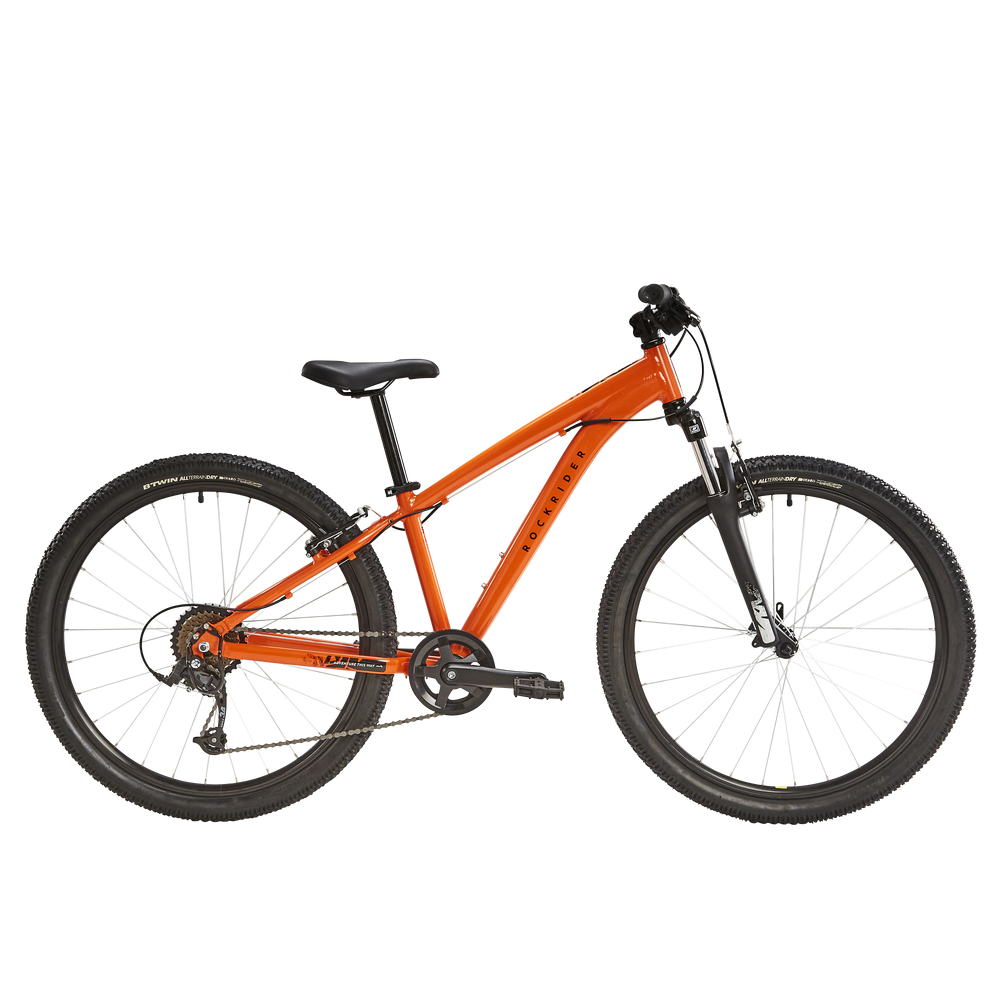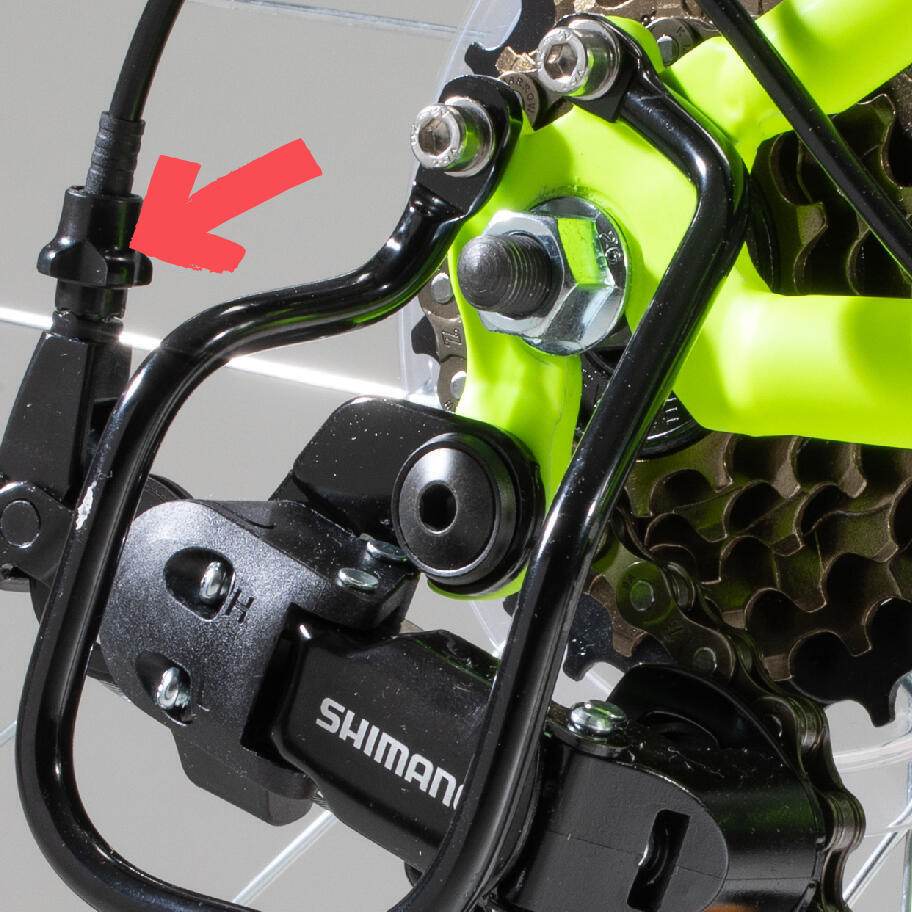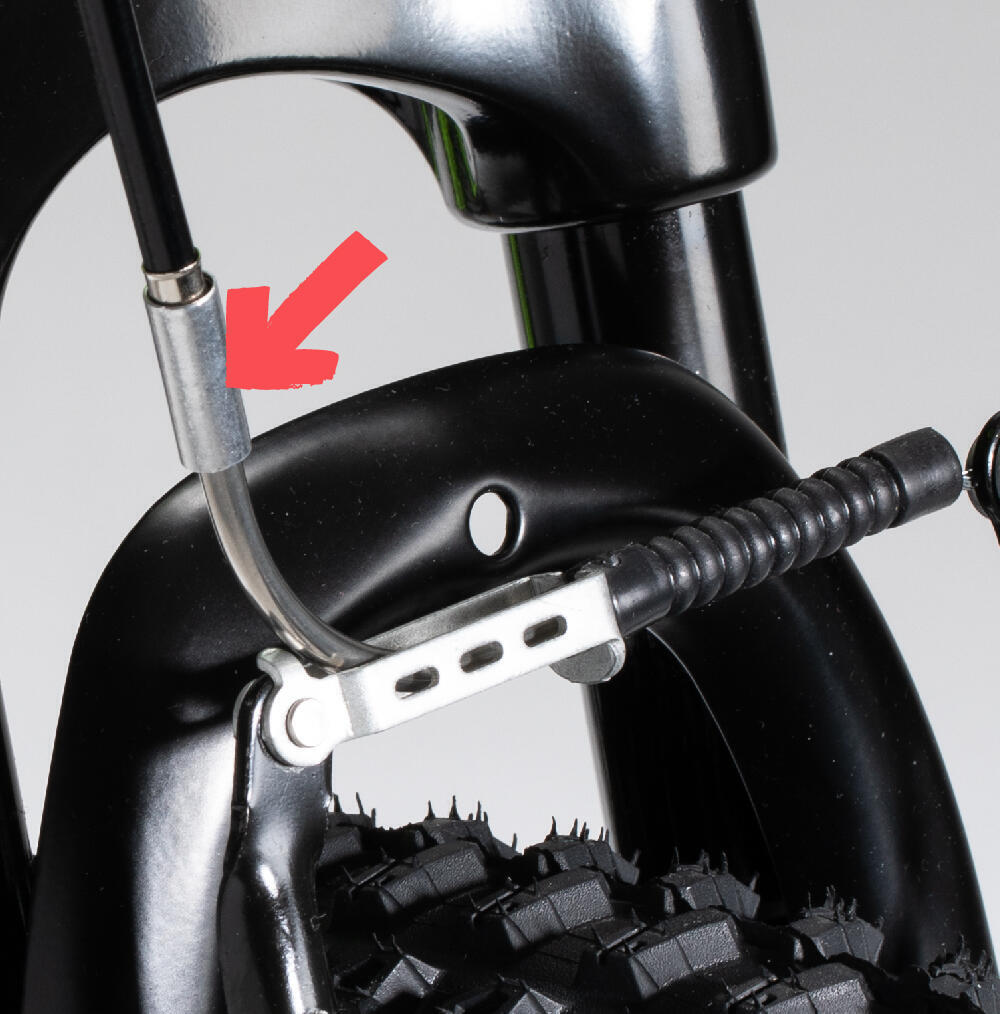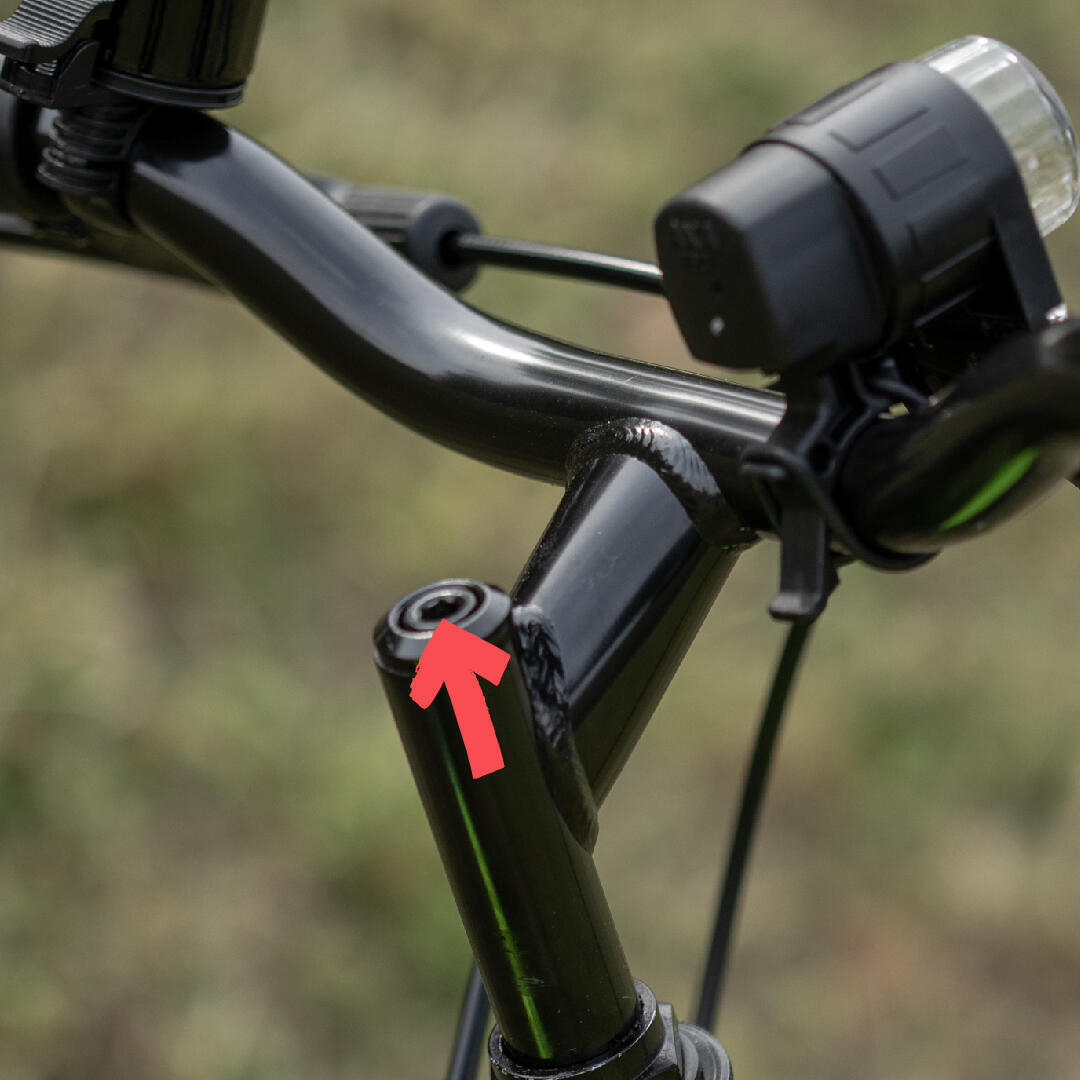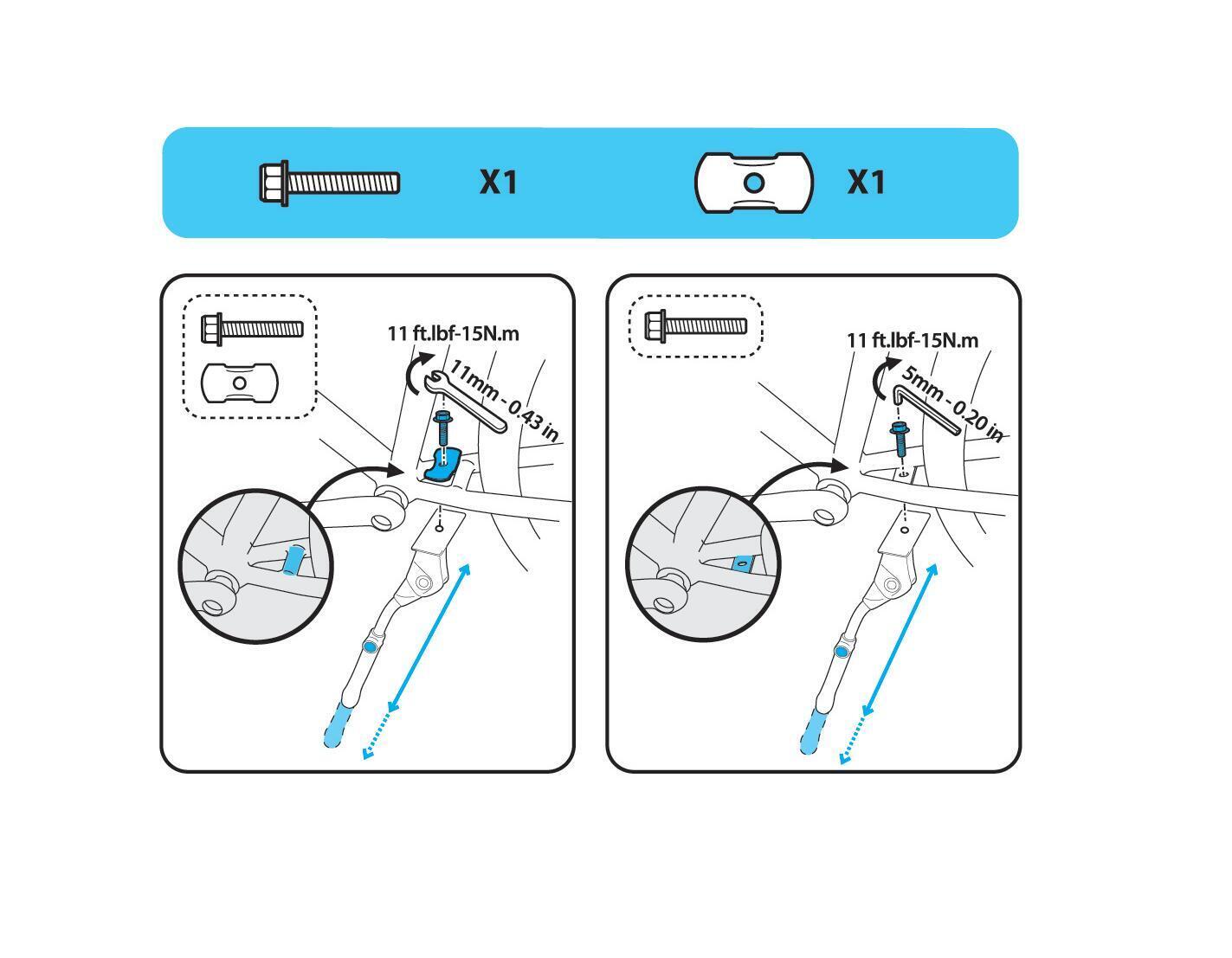Assembling the 20" mountain bike: how to fit the handlebar and pedals
Did you order online? To deliver as quickly as possible, your bike has been shipped pre-assembled. There are just 2 things you need to do before you can get started! It takes just a few moments to assemble your mountain bike. Follow our guide:
Mount the bike's handlebar
- Slide the stem tube into the head tube on your bike's frame.
- Use a 6 mm Allen key to tighten the screw on your stem (there shouldn't be any play).
- Check that the handlebar is tight and in line with the wheel by holding the wheel between your knees and trying to twist the handlebar.
Mount the bike's pedals
The "left" and "right pedals are marked so that you can tell them apart. It's important to note that the left and right pedals are threaded in different directions so that they don't come unscrewed as you ride.
- Insert the pedal into the crank
- Use the Allen key to tighten the pedal from the inside of the crank (the other side to the pedal)
- To make sure it's done up, tighten the nut (between the crank and pedal) using a 15 mm spanner.
